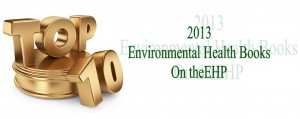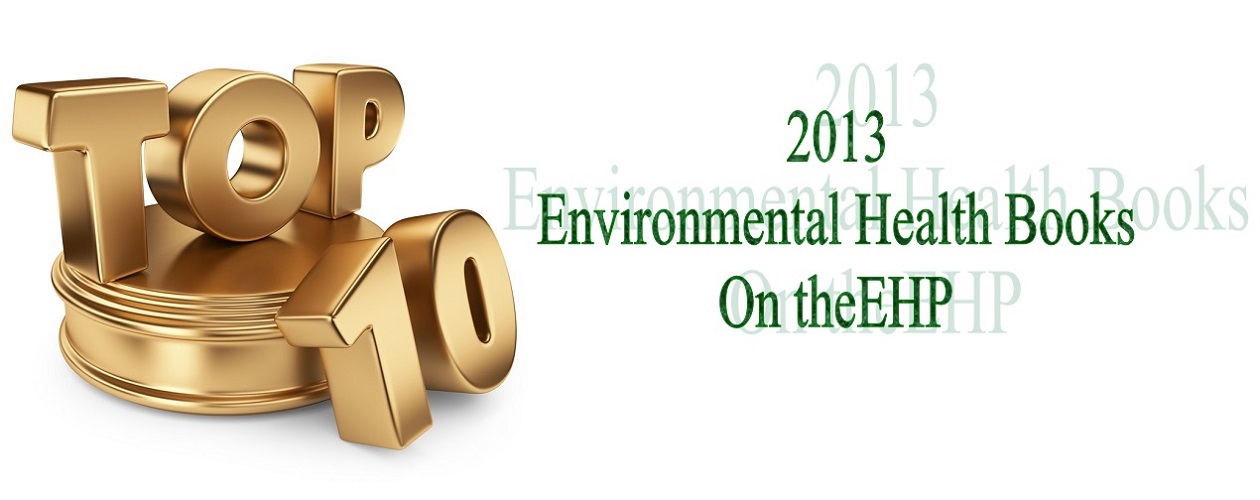 I have compiled a list of the 10 most popular environmental health books on theEHP in 2013. This list is based on an analysis of purchases and clicks through to the Amazon.co.uk.
I have compiled a list of the 10 most popular environmental health books on theEHP in 2013. This list is based on an analysis of purchases and clicks through to the Amazon.co.uk.
You can view the Top 10 book of 2012 through the link below:
1. The Damp House: A Guide to the Causes and Treatment of Dampness
Dampness can become an enemy when it invades our interior space, when it persists, when it spreads and damages our domestic fittings, finishes and furnishings, when it encourages the growth of moulds that threaten our health, and when it stimulates the spread of fungus and decay in the structure of our houses. A major industry has developed with specialist contractors but such contractors sometimes concentrate on a single treatment rather than offering a comprehensive diagnosis. |
|
2. Statutory Nuisance: Law and Practice
Statutory Nuisance: Law and Practice offers a comprehensive resource for practitioners in the legal and environmental health professions, guiding the reader through the complex practical and legal issues associated with statutory nuisance. It focuses on the problems that local authorities face in enforcing this area, as well as the issues facing those advising defendants. This title examines the role, powers, and duties of the local authorities, and the problems associated with drafting abatement notices and with the prosecution of nuisances. It also covers defences and proceedings brought by private individuals against neighbours and local authority landlords. The book analyses what happens in court, considering in detail the procedure and requirements in appeals against notices and in prosecutions, as well as the grounds for bringing further appeals and judicial review. It covers important recent decisions and key legislation. This new edition provides an update on the various types of statutory nuisance, additional chapters on new forms of statutory nuisance, and expanded material on adjacent areas of enforcement to statutory nuisance, notably those arising from the Anti-Social Behaviour agenda. |
|
2. Clay’s Handbook of Environmental Health
Clay’s Handbook of Environmental Health, since its first publication in 1933, has provided a definitive guide for the environmental health practitioner or reference for the consultant or student. This twentieth edition continues as a first point of reference, reviewing the core principles, techniques and competencies, and then outlining the specialist subjects. It has been refocused on the current curriculum of the UK’s Chartered Institute of Environmental Health but should also readily suit the generalist or specialist working outside the UK. |
|
3. Professional Practice in Public Health
With increasing numbers training and practicing public health across a range of organisations, and policy continuing to drive the public health agenda forward, the need for expertise is greater than ever. Professional Practice in Public Health will provide students and practitioners with a comprehensive and contemporary overview of public health. It is written by respected academics and practitioners drawing from their wide range of experiences in environmental and public health. The book emphasises the importance of reflective practice in developing and administering increasingly relevant policy and strategy. Each chapter takes account of the framework of competencies required by the UK Public Health Voluntary Register and aims to help students and practitioners work toward these requirements. The book s main market will be Masters students but the accessible style means that undergraduate students, students on Foundation Degree courses and practitioners will also find this book a useful learning resource. This book provides an interactive approach that includes case studies, activities and reflection points so that readers are encouraged to engage with the theory, practice, knowledge and skills. Overall the book seeks to help raise the professional stakes in delivering effective public health interventions to tackle health inequalities where they are at their most acute. |
|
4. The Real Cost of Poor Housing: (FB 23)
This report highlights weaknesses in existing models of the housing stock and proposes a new model which overcomes them. |
|
5. Practical Guide to Diagnosing Structural Movement in Buildings
Many surveyors are nervous about diagnosing cracks observed in a building. This is understandable, as the interpretation of cracks can be difficult to teach, with university courses providing little or no time for field experience. Yet by understanding one straightforward principle, the majority of cracks can be diagnosed in just a few minutes. This book provides a methodology by which cracks and movement in buildings can be diagnosed. Essential reading for the relatively inexperienced surveyor or engineer and undergraduate students of surveying as a practical guide for use on site. |
|
6. Risk-Led Safety: Evidence-driven Management
Modern day managers and health & safety professionals are bombarded with advice and pressure from every angle. Phone calls from companies trying to sell services or training and implying that without their help managers could face imprisonment. There are national and international standards that imply that they can provide a suit of armour to fend off enforcement and litigation. There is industry and HSE guidelines that are often mistakenly viewed as prescriptive requirement. Oh – and don’t forget the persecution in the press! You can’t even go to a bar these days without someone expressing a view on what should be done. All this advice confuses people and can shake their beliefs. Risk-led Safety, Evidence-driven Management is a book that is a beacon in this storm of opinion. It strips the law back to its basic elements and focuses on its spirit and intent. It dismisses needlessly complicated ideology to reveal what perhaps Lord Robens really had in mind. So if you want a book that uses plain and simple language to explain what the law is really asking you to do, then this is the book for you. In it you will learn fresh ideas that will enable you to: – use the arguments of reasonableness more effectively. – identify precisely which risk assessments you need and those you don’t. – avoid common mistakes when risk assessing. – develop a risk management system through defining which risks are the most significant. – develop a pragmatic approach to risk control. – engage employees, managers and the Board and encourage them all to be responsive. – implement any necessary changes into the workplace. The authors have over 45 years of experience between them. They have applied and developed these ideas in many different organisations and industries. This is a no nonsense book by health & safety practitioners who have learnt their craft from doing it. |
|
7. Public Health: Policy and Politics
Public health continues to pose ideological, economic and moral dilemmas for policy makers. For example, how involved should health care practitioners become in ensuring the absence of illness or promoting wellbeing? To what extent should health be a matter of state, rather than individual, responsibility? In this new edition of a highly regarded text, Rob Baggott visits the contemporary debate surrounding public health, exploring the many facets of health improvement and promotion within their historical, socioeconomic and political contexts. Both timely and engaging, the book:
Heavily revised to incorporate the latest British, European and international developments, Public Health explores the ever-changing political environment and policy processes that frame current approaches. Now providing detailed analysis of regional diversity within UK policy, this text is core reading for all those with interests in health, social and welfare policy, the development of the NHS and the voluntary sector and the essentials of contemporary public health. |
|
8. Dampness in Buildings: Diagnosis, Treatment, Instruments
This book explains the nature of dampness in buildings, how to diagnose a dampness problem before it gets out of hand and how to deal with it. It covers the problems of rising dampness and condensation (and how to distinguish them), which are generally |
|
9. HACCP Made Easy
HACCP is seen by many people as a mysterious, complicated and difficult concept. But this does not have to be the case. This book introduces and explains the 12 steps to HACCP in a clear and accessible way, using everyday examples from cooking a chicken to playing a game of football. It demonstrates how HACCP is applied in practice, with practical scenarios, case studies and completed HACCP control charts, supported by interactive questions and answers. It provides a firm foundation of HACCP understanding for readers of all backgrounds. |
|
10. Understanding Housing Defects
Understanding Housing Defects provides a concise, coherent and comprehensive introduction to the causes, investigation and diagnosis of defects in domestic buildings. For this new edition, many of the chapters have been substantially updated and new photographs have been added. There are four new chapters covering:
Many of the 21 chapters cover a specific building element and include a brief introduction setting out construction principles and the evolution of current practice. All of the chapters consider the identification, cause and diagnosis of common (and sometimes not so common) defects. This book is a must have for all those students and practitioners who require a broad understanding of housing defects. Building surveyors, general practice surveyors, architects, estate agents, housing officers and anyone involved in the management and maintenance of property as well as its construction will benefit hugely from this highly informative full-colour text. Written by the authors of The Construction of Houses, the book is also the natural companion to this bestselling textbook. |





